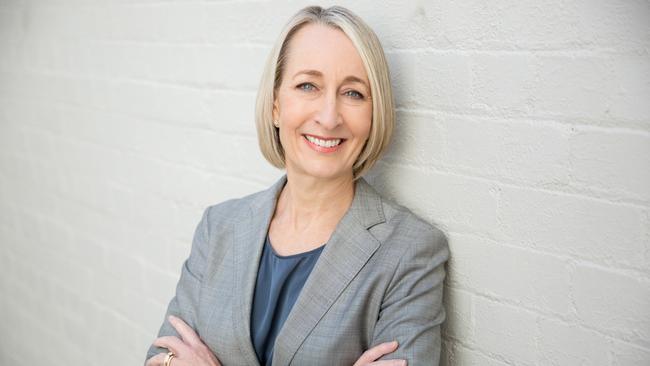
There was legislation and/or announcements about closing the gender pay gap; work leave for domestic violence sufferers; fixing the culture in Parliament House; and paid parental leave.
(That last one helps men as well as women, but it’s the women what’s won it for the blokes over many years, let’s face it.)
All in all, not a bad scoresheet for the first sitting week after the summer break, and further evidence that the Albanese administration is determined to make good on its pre-election promises in this first term.
The gender pay changes are among the most interesting, with increased transparency now proposed under the Workplace Gender Equality Act for all companies with more than 100 employees: their pay gap data will be published online from next year.
Companies have long reported on the differentials in salaries to the Workplace Gender Equality Agency but the possibility of public shaming will take things to a new level.
The change shows that, increasingly, there is nowhere for employers to hide when it comes to gender issues.
We are set for a more open debate on these questions.
Secrecy around pay works both ways. For generations, bosses and the HR department have been keen to prevent anyone knowing exactly what anyone else is taking home; and workers have often preferred to keep shtum about their salaries.
If you have managed to score a bonus or raise, it’s better not to tell the colleague slaving alongside you; and if you are underpaid, that too can be embarrassing.
Or at least that was how it used to work. A younger generation, and especially younger women, see salary secrecy as potentially disadvantaging individuals, especially women, and argue that transparency is the first step to equality. What you don’t know in this area can indeed hurt you.
Somewhat incredibly, it used to be that employers could discipline you if you revealed your pay. But the Secure Jobs, Better Pay legislation that passed parliament last year outlawed pay secrecy clauses in employment contracts.
Breaches could invite disciplinary action in the past but now it’s an employee’s right to disclose and compare his or her salary with others.
Under the proposed new WGEA rules, individual salaries will not be published but the employer-level pay gap will be. As well, companies with more than 500 employees will be required to have a dedicated gender equality strategy.
It all adds to a more rigorous and data-driven discussion about why women still lag – the gap is 22.8 per cent – and feeds into a change of attitudes among younger workers about talking about their pay, according to Lyndal Hughes, managing director of consulting firm Q5.
“You’ve got this more open conversation within organisations, which in itself will lessen that pay gap,” Hughes says.
And Gen Z is up for it, she suggests: “They’re likely to say, ‘why can’t I have an adult conversation if I’m with another adult, and they are happy to share’?”
Hughes says she has found her clients now pay far more attention to remuneration and are much more methodical in how they set pay scales for their workers.
“It’s causing businesses to be even more specific and defensible in their decisions, to be really clear on the criteria, to be clear on the data that they’re using and how that data has been used,” she says.
“Historically, males and females doing exactly the same job have been treated differently. That’s obviously lessened over time, but in the information knowledge world it’s really hard in many organisations to say that one role is exactly the same as another.”
She notes the pay differentials are caused in part by women stepping back in the childcare years and missing out on regular pay rises when they are on parental leave, for example. And a new problem has arisen in the hybrid work now spreading across many sectors – women are often keen to stay home to better manage the kids, but they are then often out of sight and are disadvantaged when it comes to promotions.
The gender pay gap varies between states – it’s really high in Western Australia and much lower in South Australia, for example.
And that goes to the heart of one problem – the feminisation of some industry and sectors and the male domination of others. As women leaders endlessly note, with some frustration, Australian women are highly educated, yet we have one of the most highly gender-segregated industrial structures in the developed world.
“The full-time workforce in Western Australia, for example, has a larger share of mining and construction than other states,” the WGEA says on its website. “These two industries have relatively high earnings and low representation of women.
In SA and the ACT, the public sector workforce is larger than in other states. This sector has a lower gender pay gap and more balanced gender representation.”
The release last October of the Gender Equity Insights 2022 report from Curtin University’s specialist unit, the Bankwest Curtin Economics Centre, and the WGEA offered detailed evidence of how the composition of the workforce generates pay gaps.
Centre director Alan Duncan said back then that it was important to question why some sectors were poorly paid and whether women’s contributions were adequately remunerated.
In short, do we have relatively low wages for childcare and aged-care workers, who are generally women simply because they are women?
The government’s proposed changes to the WGE Act cover other recommendations from a recent review of the decade-old legislation.
They include requiring employers to provide their WGEA gender equality reports to their governing bodies; a new requirement for policies or strategies across gender equality drivers; and refining what employers report to WGEA, including a broader range of matters relating to sexual harassment and discrimination.




It was all about the women in federal parliament this week, as ministers fell over each other in their rush to talk about all Labor was doing for the 50.21 per cent of the population they say still get a raw deal.